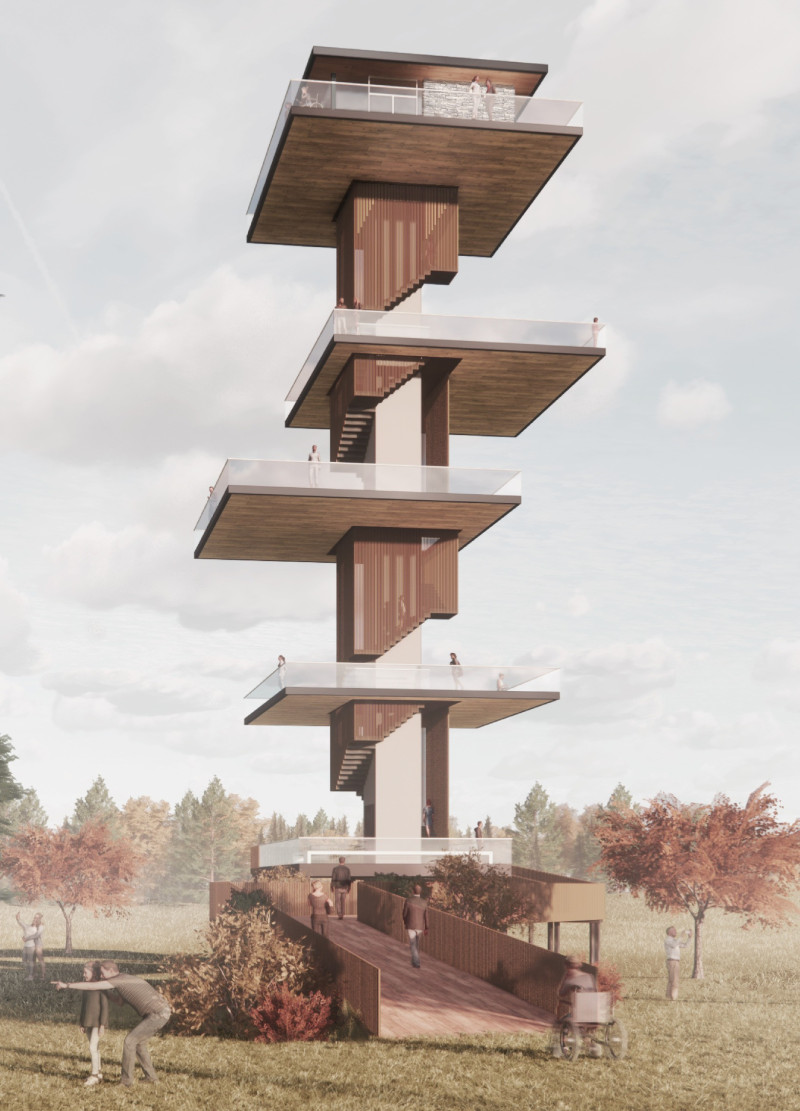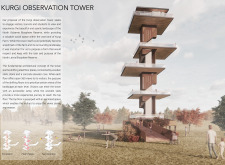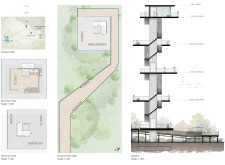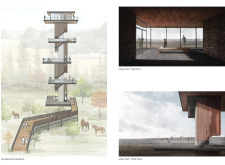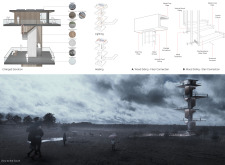5 key facts about this project
Innovative Structural Design
One of the key features of the Kurgi Observation Tower is its cantilevered floor design that allows for shifting levels. Each floor plate is positioned to optimize views and provides a unique perspective of the landscape. This approach contrasts with conventional observation towers, where uniform height levels might limit visual engagement. The structured variation in height facilitates a dynamic experience, inviting visitors to explore the space and discover different landscapes at each level.
Materiality is another significant aspect of the design. The project employs a combination of concrete for structural stability, steel in shifting plates for strength and adaptability, and wood for aesthetic warmth, creating a harmonious blend with the natural surroundings. The use of glass in the top floor offers unobstructed views, enhancing the experience while providing shelter from weather elements. This thoughtful material selection emphasizes sustainability and promotes durability in a natural setting.
Functionality and Accessibility
The tower serves multiple functions, comprising an observation platform, an educational space, and a public gathering area. Accessibility is a primary consideration, with an inclusive design featuring ramps and elevators to ensure all visitors can appreciate the views and engage with the environment. The architectural layout encourages movement throughout the space, promoting a fluid transition from the ground to the top levels.
The landscaped area surrounding the tower integrates with local flora and pathways to create an inviting experience. This connection to nature is enhanced through the thoughtful design of exterior spaces, encouraging visitors to explore the area beyond the tower. The project exemplifies an architectural solution that meets the needs of diverse user groups while respecting the ecological context of the biosphere reserve.
Engagement with Environment
The Kurgi Observation Tower represents a significant step in architectural practices emphasizing environmental awareness. The design encourages visitors to interact with and appreciate the surrounding ecosystem. By providing an educational platform, the tower fosters stewardship and appreciation for natural resources, highlighting the importance of ecology in architectural design.
For additional insights into the Kurgi Observation Tower, including architectural plans, sections, and various design elements, readers are encouraged to explore the project presentation thoroughly. A detailed examination of these architectural ideas can enhance understanding of the project's unique contributions to both architecture and environmental engagement.


